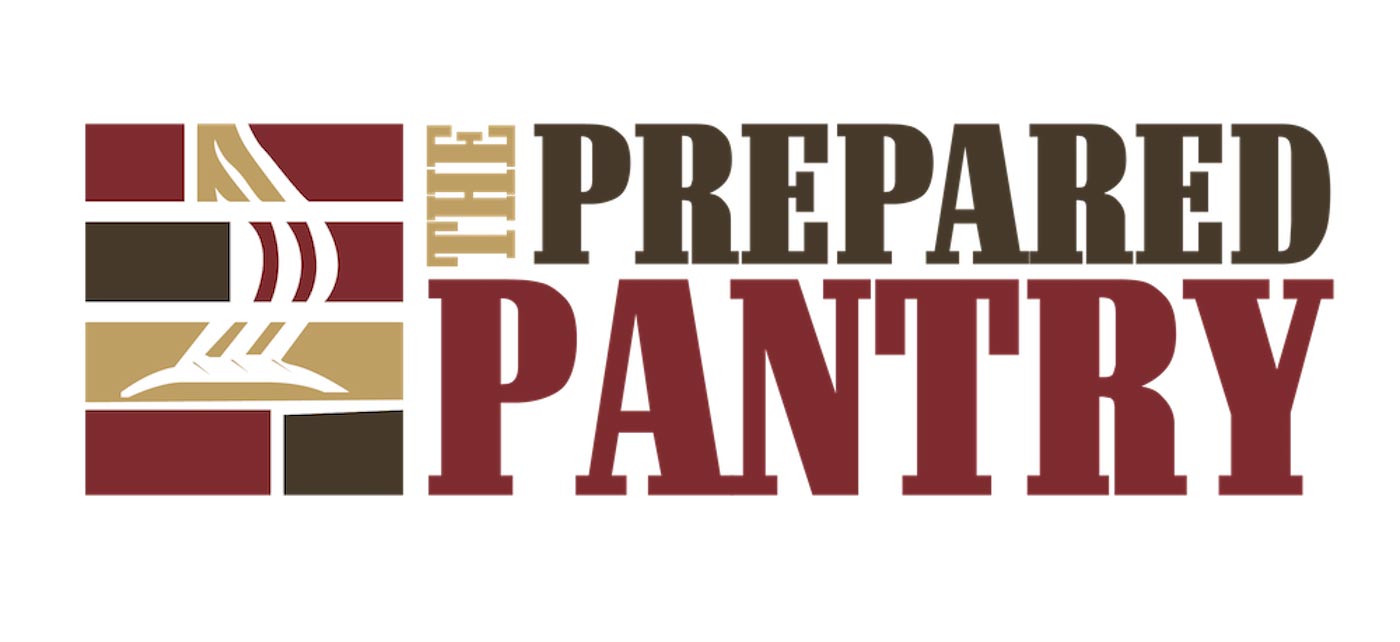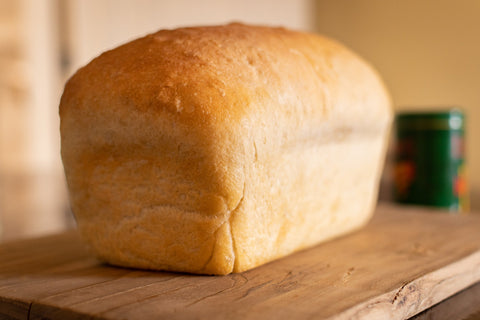Abstract: This is an article for bread bakers and lovers. It explains how breads work—the role of both the gluten and the yeast. It also explains how dough enhancers improve breads and introduces the next generation of dough enhancers. Finally, it explains how to use dough enhancers. If you bake bread, you need to know about dough enhancers.
It was late afternoon on a Friday when Merri Ann took this picture. The ridge in the background is the Continental Divide; the lake is on the Montana side.
A storm had passed through in the afternoon. The wind put a heavy chop on the lake, accompanied by a pouring rain, lightening, and thunder. We sat in the truck and watched the passing storm, the dark clouds, the whipping of the willows, the bowing of treetops as the wind pushed them around. The rain pounded against the windshield. It didn’t last long but it snapped trees before moving on.
When it left, there were puddles in the pine needles and the late afternoon sun, slipping behind the clouds, caught water dripping from the trees, sparkling with the colors of a rainbow. The air was cool and clean.
I stood on the shore, listening to the water rolling into shore, watching the lake subsiding, and absorbing the beauty of the lake and its curtain of mountains.
The Miracle of Bread
One afternoon, our friend Cy and I discussed the miracle of bread. Instead of mountains two miles high that cradle lakes, bread is a marriage of tiny particles we can’t see: inanimate proteins that twist together and form gluten and living yeast spores that convert the starches in flour into sugar for energy, to flavor the bread, and form gases—carbon dioxide that opens up the dough to make the bread light and airy. Only wheat flour contains the proteins that build the netting to capture the gases expelled by the yeast to open the bread and make it light. Nature is an engineer and bread is a miracle.
But this article is for bread bakers. It’s about how bread works and about how dough enhancers make bread better. Dough enhancers improve the workings of both gluten and yeast making lighter, taller loaves.
Dough enhancers are amazing. They’re a “secret ingredient”. They make good bread, great. We hear from customers, “My loaves are so much bigger and lighter now,” or, “My dough is so much easier to work with.”
- Yeast prefers a slightly acidic environment and a good dough enhancer will alter the pH of the dough. Our grandparents added a tablespoon of lemon juice to their dough making it slightly acidic. We add dough enhancer.
- Gluten is formed with two proteins found in wheat flour, gliadin and glutenin. When hydrated and mechanically worked, they form gluten strands. A good dough enhancer will strengthen the gluten structure, making the strands longer and stronger. The strands stretch and give the dough more elasticity and gives bread it’s chewiness.
- With a better gluten structure, more of the carbon dioxide gas expelled by the yeast is captured. The dough swells and rises more. The loaf becomes taller and crumb lighter and less compact.
- A good dough conditioner makes the bread hygroscopic. Hygroscopic means that the bread pulls moisture from the air making the bread moister instead of drying out. It stays fresher longer. (Potato flour is another hygroscopic ingredient. Yes, we often add a little potato flour to our mixes.)
Sometimes a dough enhancer improves the crust. I don’t understand the chemistry, or maybe biology of that.
A new generation of dough enhancers
Dough enhancers are proprietary—each producer has its own formula and those formulas are usually closely guarded and of course, some work better than others. And they’ll work differently in different recipes.
We’ve used two dough conditioners for years and were happy with their performance. This year, we have a new generation of four dough enhancers. We have been testing these new enhancers, running hundreds of trials. We’re still working on them.
It’s been a grand experience. We are pitting the four enhancers against each other, one formula at a time. They all work, but they work a little differently in different formulas (or recipes). We’re working for two objectives in each bread: (1) Which enhancer works best for that bread and (2) how much should we use? It takes multiple trials to determine that, especially within the confines and times of a bread machine.
You don’t have to have a bread machine but our yeast bread mixes can be made in a bread machine.
Dough enhancers can improve the crust or the taste of the bread but that’s usually secondary to making the bead lighter and taller.
With our new dough enhancers, we start with a modest amount of one of the enhancers, usually a teaspoon per loaf but then, in trial after trial, increase the amount up to as much as four teaspoons. We often end at two teaspoons per loaf.
Then we start the process with another dough enhancer. We always try at least two dough enhancers
Using dough enhancers at home
If you’re doing this at home, making bread from a recipe, you’re probably not going to do all the trialing. Any of dough enhancers will work. Buy one of the dough enhancers—it’s going to be a guess—and try it. Use the dough enhancer with several batches and several amounts until you find what works best.
Later you can switch to another dough enhancer and try that. We have found that in any given recipe, the performance of different enhancers vary significantly but expect them all to improve your bread, to make it lighter and taller.

The four dough enhancers
We buy our dough enhancers in 50-pound bags or boxes and then repackage them into smaller bags for home use. Each has a proprietary name that we’re not authorized to use. So, we created our own names, and had a little fun doing it. We enjoy the woods and the mountains so we picked geographical names in the area that mean something to us. For you, it’s just a way to keep track of which enhancer you used last. Here they are:
Summit Dough Enhancer
If you drive up the Big Lost River valley, past the little town of Mackay, you’ll come to Trail Creek Road. Turn there and drive to the summit. There the world changes. The Big Lost valley is lonely and the road to the summit is civilized. You’re driving across open hills and through dense forest. It’s peaceful.
At the summit, there is a sign, “Caution. One lane road with turnouts.” The road dives through a deep canyon lined with cliffs. When you get to bottom, you’re in Sun Valley—right downtown Sun Valley. It’s a very different world than the open spaces of “the Big Lost”.
The road from the summit to Sun Valley is labeled, “one of the most dangerous roads in America.” It’s terrifying for some. It is a one lane road with turnouts for passing every quarter to half mile. If you meet an oncoming vehicle between turnouts, one of you is going to back up on a precarious road until you reach a turnout. So, whether going up or down, you pause at each turnout and look for traffic. If you see an oncoming vehicle, you wait at the turnout for the vehicle to pass.
For Merri Ann and me, the road is a two-person job—one driver and one spotter. The road is closed in the winter.
How’s that for the name of a dough enhancer intended to make your loaves taller?
Pilot Dough Enhancer
Pilot Peak is in Wyoming in the Absaroka Mountains. It’s aptly named, it stands out as a major landmark for many miles. To the south, is Index Mountain. A line from the top of Index Mountain through the top of Pilot Peak is a north-south line—convenient for hikers and pilots.
For us, that’s a fun name for a dough enhancer.
Borah Dough Enhancer
Looking north from The Summit across the Big Lost Valley is a line of high mountain peaks capped with snow. One of those is Mount Borah, the highest peak in Idaho.
We named one of our dough enhancers after Mount Borah.
Centennial Dough Enhancer
Tucked behind the Continental Divide west of West Yellowstone, Montana, is Centennial Valley. It’s a favorite place of ours and we go there often. It’s high and remote, a gorgeous mountain valley. There are no paved roads in the valley. The Red Rocks Lake Wildlife Refuge is in the valley. In the east end of the Valley, is the Alaska Basin. Hellroaring Creek tumbles through the basin. It’s the furthest distant source of the Mississippi/Missouri River complex.
We love the Centennial Valley. That’s a fine name for a dough enhancer.
They all four are great enhancers.
Enhanced bread mixes
When we got to our Buttermilk Wheat Bread—which is a very good, very popular bread—we found the difference with the new dough enhancer was dramatic, especially when we increase the amount of enhancer. So, we made the adjustments in the formula, reworked it, and started testing. It made it a new improved bread, a better bread.
We also enhanced Cinnamon Raisin English Muffin Bread. It too, is taller and lighter. And we added more raisins.
Considering what a dough enhancer can do, it may be the best bargain in baking often costing less than ten cents per loaf. And dough enhancers are easy to use, just add the dough enhancers with your flour.


 Dennis Weaver
Dennis Weaver




Comments (3)
How do you know which dough enhancer to use and when. Are each intended for specific varieties of bread? Why would I buy one over the other?
Thanks, Janice. We love our customers and really try to do right by them. (Ah, the joys of a family-owned business.)
Both photos were taken Montana, about 100 miles apart, both facing the continental divide.
The lake is Lower Twin Lake in the Big Hole Valley. I would love to take a canoe across the lake and access Upper Twin. The clear water is so inviting. There is a nice campground, but it’s a long drive on dirt roads. It’s snowed in now but we’ll go back next summer.
Centennial Valley is just an hour from home so we go there often. It’s a fabulous ride from Red Rock Pass to Monido, Montana. They fixed the road this summer so that is passable for cars. Lots of deer, elk, and antelope.
Love the article and photo. I live in Kansas. Almost right in the middle of the state in Wichita. Kansas produces a lot of wheat too. Red hard wheat and white wheat. I love yours products and so does my family and friends. I love to bake bread and sweet bread. You make it easy.